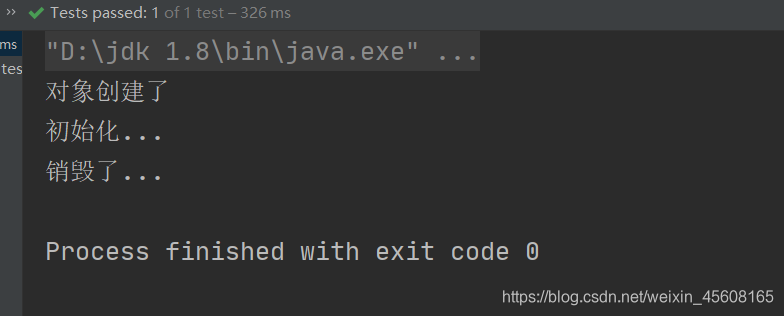bean的作用范围:
可以通过scope属性进行设置:
- singleton 单例的(默认)
- prototype 多例的
- request 作用于web应用的请求范围
- session 作用于web应用的会话范围
- global-session 作用于集群环境的会话范围(全局会话范围)
测试:
<!-- 默认是单例的(singleton)-->
<bean id="human" class="com.entity.Human"></bean>
<bean id="human" class="com.entity.Human" scope="singleton"></bean>
@Test
public void test(){
//通过ClassPathXmlApplicationContext对象加载配置文件方式将javabean对象交给spring来管理
ApplicationContext applicationContext=new ClassPathXmlApplicationContext("bean.xml");
//获取Spring容器中的bean对象,通过id和类字节码来获取
Human human = applicationContext.getBean("human", Human.class);
Human human1 = applicationContext.getBean("human", Human.class);
System.out.println(human==human1);
}
结果:

将scope属性设置为prototype时
<bean id="human" class="com.entity.Human" scope="prototype"></bean>
结果:

singleton和prototype的区别
- 如果bean属性设置为singleton时,当我们加载配置文件时对象已经被初始化
- 而如果使用prototype时,对象的创建是我们什么时候获取bean时什么时候创建对象
当设置为prototype时


当设置为singleton时

bean对象的生命周期
单例对象:
- 出生:当容器创建时对象出生
- 活着:只有容器还在,对象一直活着
- 死亡:容器销户,对象死亡
- 单例对象和容器生命周期相同
测试:
先设置属性init-method和destroy-method,同时在person类中写入两个方法进行输出打印
public void init(){
System.out.println("初始化...");
}
public void destroy(){
System.out.println("销毁了...");
}
<bean id="person" class="com.entity.Person" scope="singleton" init-method="init" destroy-method="destroy">
</bean>
测试类:
@Test
public void test(){
//通过ClassPathXmlApplicationContext对象加载配置文件方式将javabean对象交给spring来管理
ClassPathXmlApplicationContext Context=new ClassPathXmlApplicationContext("bean.xml");
// //获取Spring容器中的bean对象,通过id和类字节码来获取
Person person = Context.getBean("person", Person.class);
//销毁容器
Context.close();
}
结果:

总结:单例对象和容器生命周期相同
当属性改为prototype多例时
- 出生:当我们使用对象时spring框架为我们创建
- 活着:对象只要是在使用过程中就一直活着
- 死亡:当对象长时间不用,且没有别的对象应用时,由java垃圾回收器回收对象
测试类:
@Test
public void test(){
//通过ClassPathXmlApplicationContext对象加载配置文件方式将javabean对象交给spring来管理
ClassPathXmlApplicationContext Context=new ClassPathXmlApplicationContext("bean.xml");
// //获取Spring容器中的bean对象,通过id和类字节码来获取
Person person = Context.getBean("person", Person.class);
//销毁容器
Context.close();
}
结果:

总结:由于Spring容器不知道多例对象什么时候使用,什么时候能用完,只有我们自己知道,因此它不会轻易的把对象销毁,它会通过java垃圾回收器回收对象